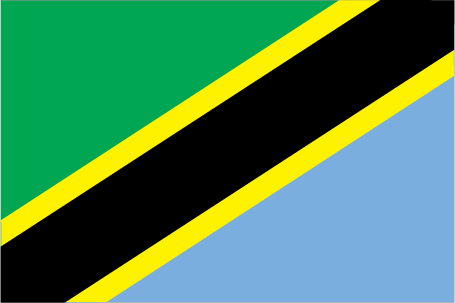To help inspire or plan your trip to Tanzania, some of its major attractions
for travellers are shown below, including some of the best natural, historical, cultural and adventure sites in the country.
These include all of UNESCO World Heritage Sites for Tanzania which represent the best
of the world's cultural and natural heritage.
Click on the icons below to focus on specific types of features
(click again to return to all).
|
|
|
|
|
|
|
|
|
|
|
|
 |
|---|---|---|---|---|---|---|---|---|---|---|---|
| Natural | History | Wildlife | Trekking | Cities | Religious Monument | Boat Journey | Rail Journey | Diving | Cultural | Adrenaline | UNESCO WHS |
Northern Tanzania - Wildlife attractions
| Serengeti National Park | |
|---|---|
The Serengeti is the quintessential East African national park and perhaps the most famous, covering some 15,000 km² of savannah plains. The Serengeti boasts the largest concentration of plains game in Africa, with an estimated three million large animals, including some 2,500 lions. It is famous as the location of the annual migration of huge herds of wildebeest, zebras and gazelles as they travel between here and the Masai Mara in Kenya in search of fresh grazing lands, offering excellent chances to see kills by predators seeking nourishment of their own. UNESCO World Heritage Site: Serengeti National Park | |
| Ngorongoro Crater | |
|---|---|
The Ngorongoro Crater in northern Tanzania is one of the most unique and exciting wildlife reserves in Africa. Ngorongoro is actually a caldera, formed from a collapsed volcano millions of years ago, which now forms a huge natural amphitheatre with perhaps the greatest permanent concentration of wildlife in Africa. The crater's steep walls (over 600 metres high) enclose a vast space of 260 km² which includes open savannah, swamps, forests and the Lake Magadi soda lake, attracting flamingos and other water birds. Most large African animals are found in the crater (exceptions being giraffe and white rhino) and the crater's walls, balance of species and permanent water source mean they rarely leave. Of particular note are some 30 black rhino, the largest concentration left in Africa, and its famous lion population, though the 60 or so lions found there today are apparently suffering from the effects of inbreeding. Leopards, elephants, buffalo, hippos, hyenas and various prey species also call the Ngorongoro Crater home. You may also spot Maasai tribesmen lead their cattle down the crater walls - they have grazing and watering rights in the crater. UNESCO World Heritage Site: Ngorongoro Conservation Area | |
| Lake Manyara National Park | |
|---|---|
Lake Manyara National Park is one of the smaller of Tanzania's parks but has a diverse scenery ranging from dense woodlands to mountains, grassy floodplains and of course Lake Manyara itself. The park is famous for its elephant population while the lake provides great opportunities for bird watching, with a wide range of species including a population of flamingos. In addition leopards and the elusive tree-climbing lions may be seen in the forests, while blue and vervet monkeys are found in the park's mahogany and sausage trees. | |
| Tarangire National Park | |
|---|---|
Tarangire National Park is located to the south of the Maasai lands and is an excellent wildlife destination away from the crowds visiting the northern parks. The Tarangire River which flows through the park provides a permanent water source, ensuring a large concentration of game during the dry season, in particular elephant, oryx, gazelles, Burchell's zebra and gerenuk antelope. In their wake come the predators, including wild dog and some 200 lions. | |
| Mount Kilimanjaro | |
|---|---|
Mount Kilimanjaro is Africa's highest mountain. It is a magnificent site, rising out of the surrounding plains, encircled in mountain forest, with its snowy peak 5,895m above sea level. Climbing Mount Kilimanjaro is one of the great trekking challenges in the world. Though not requiring any specialist mountaineering skills, it is still a fairly arduous task, with oxygen levels at its peak only half those at sea level. The view from the top, with hundreds of miles of the plains of Tanzania and Kenya below you, make all the effort worthwhile though. UNESCO World Heritage Site: Kilimanjaro National Park | |
Southern Tanzania - Wildlife attractions
| Selous Game Reserve | |
|---|---|
Selous Game Reserve in southern Tanzania has excellent game viewing away from the crowds of the more popular and famous national parks further north, offering an authentic and untouched African safari rarely found today. At almost 55,000 km² it is the largest wildlife sanctuary in Africa, four times the size of the Serengeti. Selous is home to elephant, buffalo, rhino, giraffe, waterbuck, hippo, leopard and lion amongst other species as well as abundant birdlife. UNESCO World Heritage Site: Selous Game Reserve | |
| Ruaha National Park | |
|---|---|
Ruaha National Park is Tanzania's second largest park and one of its wildest, receiving far fewer visitors than other reserves. The Great Ruaha River which flows through the park creates spectacular gorges and scenery and swarms with hippos and crocodiles. Ruaha is known for its huge herds of elephant and buffalo, as well as kudu, sable and roan antelope and waterbuck. Feasting on this game are leopards, lions, cheetahs and rare wild dogs. | |
| Mikumi National Park | |
|---|---|
Mikumi National Park in southern Tanzania offers opportunities to view hippos, elephants, buffalo and lions as well as eland, kudu and sable antelopes. | |







